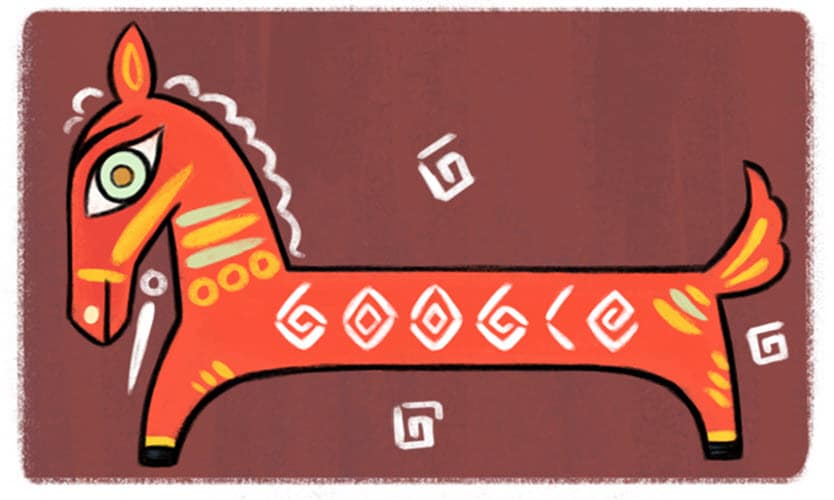Brushstrokes of Brilliance: Exploring Jamini Roy’s Artistic Legacy

Image Courtesy: Google Doodle
Jamini Roy (11 April 1887 – 24 April 1972) was an Indian painter. He was honoured with the State award of Padma Bhushan in 1954. He was one of the most famous pupils of Abanindranath Tagore, whose artistic originality and contribution to the emergence of art in India remains unquestionable.
Life and Career
He was born on 11 April 1887, in Beliatore, a small village in the Bankura district of West Bengal, India. He is known for his unique style of painting that combines elements of Indian folk art with modernist techniques. Roy’s art was a reflection of his deep roots in Bengali culture and his commitment to promoting indigenous art forms.
Roy started his career as a student of the Government School of Art in Kolkata, where he learned Western techniques of painting. However, he soon became disillusioned with the Western style and decided to focus on Indian folk art, which he felt was more authentic and rooted in the culture of his country.
Roy’s early work was heavily influenced by the Kalighat painting style, which originated in the late 19th century in Kolkata. He used bold lines and flat colours to create simple but powerful images of Indian mythology and everyday life. Over time, his style evolved to incorporate elements of other folk-art forms, including Madhubani and Warli.
Throughout his career, Roy received numerous awards and accolades for his contributions to Indian art. In 1954, he was awarded the Padma Bhushan, one of India’s highest civilian honours.
Jamini Roy continued to paint until his death, leaving behind a legacy that has inspired generations of Indian artists. Today, his paintings are highly sought after by collectors around the world and can be found in the collections of major museums and galleries.
He died on 24 April 1972 in Calcutta, West Bengal, India.
Award and Legacy
Jamini Roy’s contributions to Indian art have been widely recognized, and he has received numerous awards and honours in his lifetime. Some of the notable ones are:
- Padma Bhushan was award in 1954 by the Government of India for his significant contributions to the field of art.
- Fellow of the Lalit Kala Akademi, New Delhi, in 1956.
- Viceroy’s gold medal in an all-India exhibition in Delhi in 1934.
Jamini Roy’s legacy as an artist is significant. He is known for his unique style that blended Indian folk art with modernist techniques. His art was a reflection of his deep roots in Bengali culture and his commitment to promoting indigenous art forms. His contribution to Indian art is immense, and he is considered one of the most important modernist artists in India.
Jamini Roy’s paintings continue to be highly sought after by collectors around the world, and his influence can be seen in the work of many contemporary Indian artists. His work has been exhibited in major art galleries and museums across the world, including the Victoria and Albert Museum in London, the National Museum in New Delhi, and the Museum of Modern Art in New York.
In conclusion, Jamini Roy’s legacy as an artist is significant and continues to inspire new generations of artists in India and around the world. His unique style and contributions to Indian art have earned him a prominent place in the history of modernist art in India.
On 11 April 2017, Google celebrated Jamini Roy’s 130th birthday with a doodle.
Observer Voice is the one stop site for National, International news, Sports, Editor’s Choice, Art/culture contents, Quotes and much more. We also cover historical contents. Historical contents includes World History, Indian History, and what happened today. The website also covers Entertainment across the India and World.

